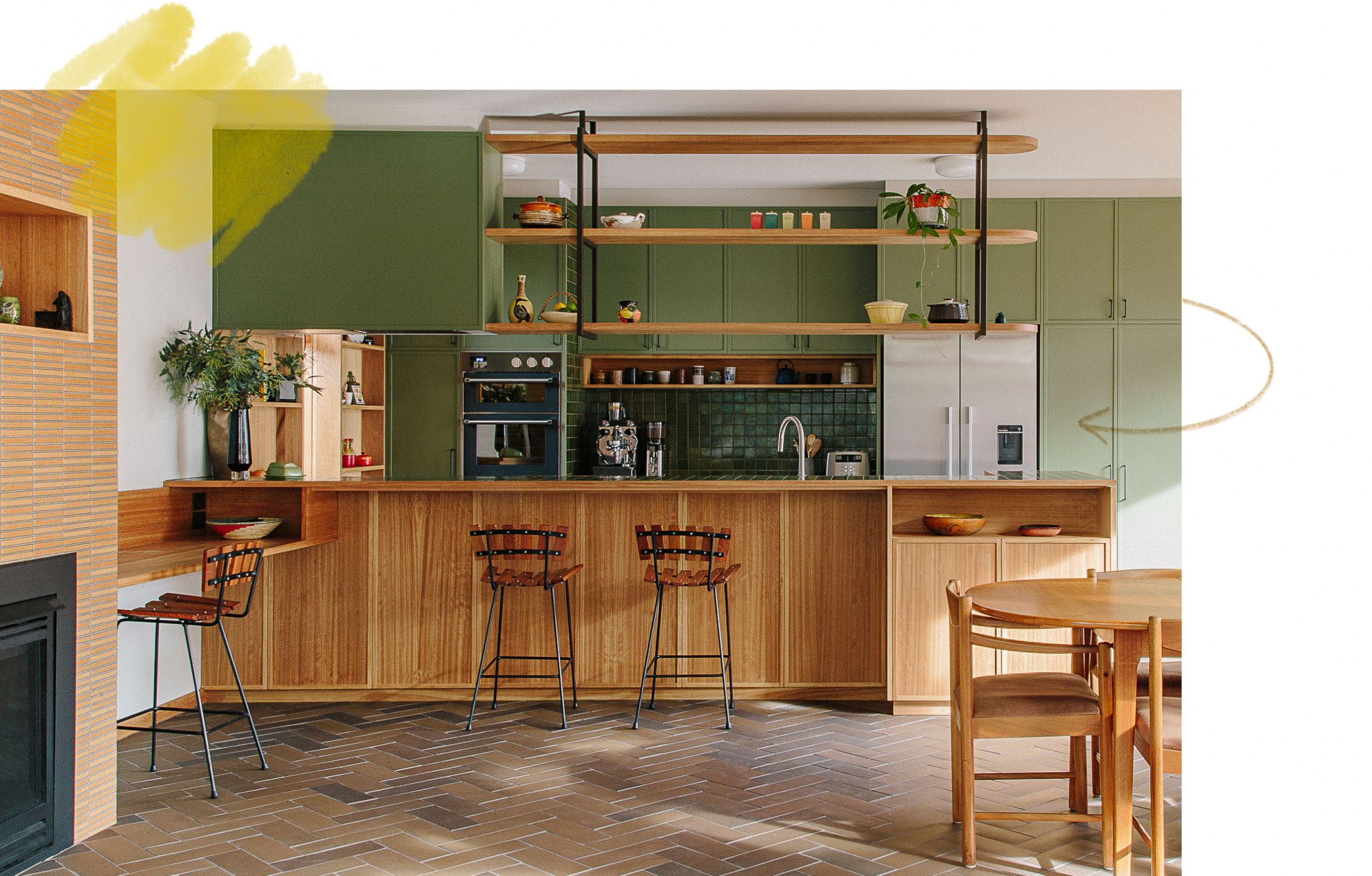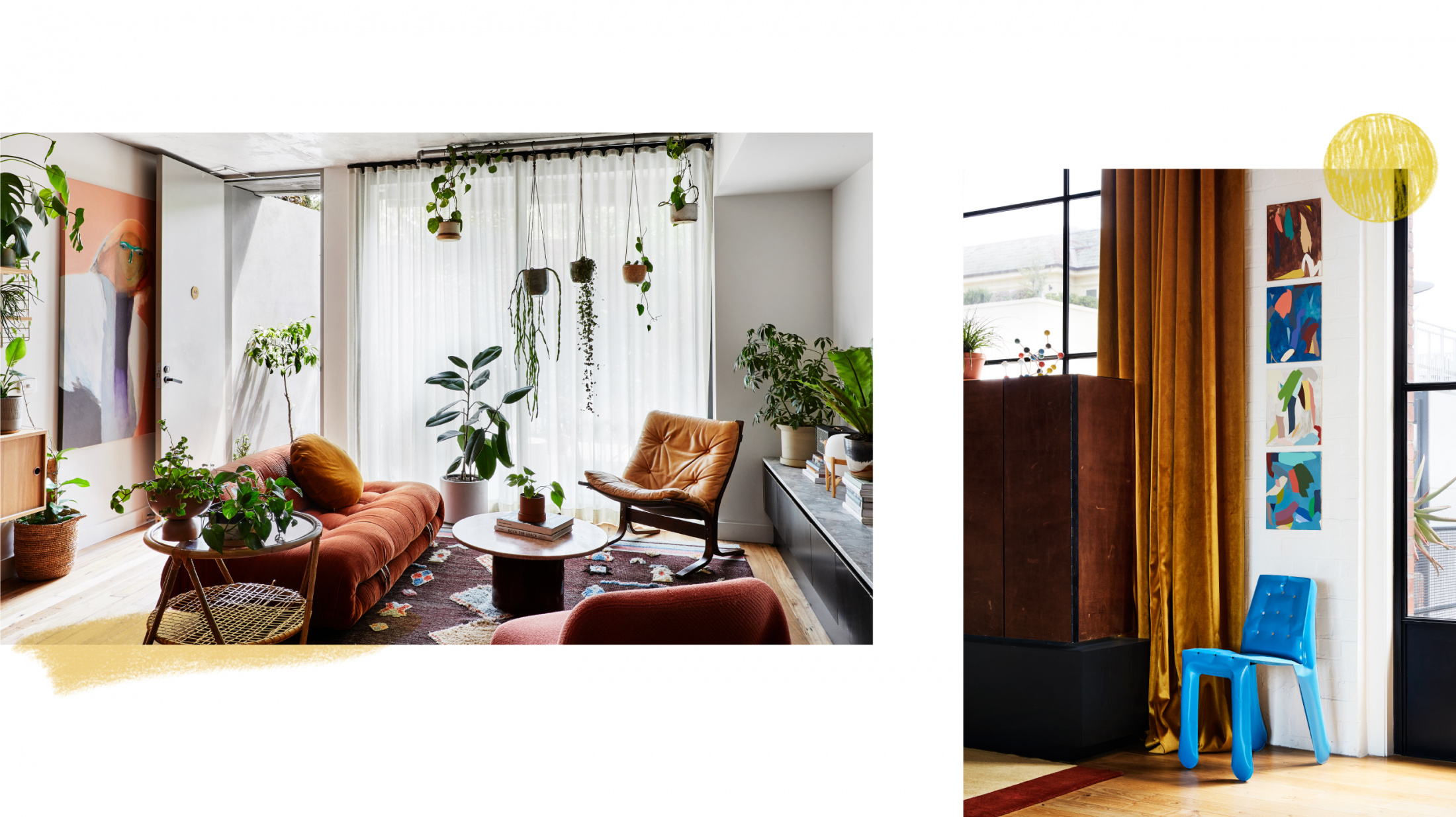Determine your key objectives
Interior designer Megan Norgate of Brave New Eco recommends first defining your project’s key objectives. Understanding your priorities will help you decide where to spend most of your money!
‘Some people are more focused on energy efficiency, and they will really go the extra distance on appliances and systems; some people are really focused on protecting forests and responsible timber selection; and others are very focused on non-toxic materials,’ says Megan.
It is possible to have it all, but inevitably you will have to make some compromises along the way. ‘You will still try and achieve good outcomes across the board, but there will be times when you need to push your focus one way or another,’ says Megan. For this reason, it pays to be crystal clear on your goals.
Fashion-proof your choices
For a residential interior to be truly sustainable, it needs to have a long lifespan, which means choosing a timeless design scheme.
Think about it, how often have you fallen in love with a certain trend, which you’ve then actively detested just a few years later? Rather than considering if you’ll definitely love that black matte tapware/millennial pink scheme/velvet sofa down the track, Megan asks clients the opposite: ‘Would you have loved this look five years ago?’ If the answer is no (be honest), it’s likely you’ll end up throwing your entire interior design scheme out before the end of its natural life – and there’s nothing sustainable about that. ‘It’s about containing what I call the ‘kid in the candy store effect’ says Megan.
One way to ensure a space will have longevity is to develop what Megan calls ‘emotional durability,’ whereby almost every element of your home has sentimental value. To create this, integrate items into your home that (already) have meaning to you, and where possible, develop direct relationships with the makers of your furniture and homewares. ‘If you have been involved in some way, and met the people who have made the things in your home, you’ll care about them more, and for longer,’ Megan says.
Choose decorative materials wisely
Determining the most sustainable decorative materials is a complex task, as there are so many factors to consider. ‘We look for companies that are transparent with their manufacturing processes and sustainability objectives, and or are accredited with third parties such as Good Environmental Choice Australia (GECA) or Forest Stewardship Council (FSC),’ says Megan.
Megan also advocates for local products and small scale makers as the top priority, as these tend to often offer more transparency in how their products are made. ‘The more you can put your money into local people doing quality work, the better the outcome will be, and it’s better for the environment, she says. ‘It’s a movement towards a higher skilled way of making things, rather than mass produced.’
In saying that, there are some materials Megan tries to avoid or use only sparingly, including chrome, and building products containing formaldehyde (such as MDF board), exotic rainforest timbers (recycled is better, or locally sourced), and natural stone.
Paints and sealants should always be low VOC types, so be sure to specify this to your painter and tradespeople from the outset. Megan says you’ll be able to tell if this hasn’t happened simply by the smell of your house immediately afterwards. ‘The smell test is pretty powerful, and houses that have used natural sealants (everywhere) actually smell kind of good – there’s not that burning nostril feeling!’
Invest in window furnishings
Curtains are one of the most effective ways to retrofit greater energy efficiency into a home, and yet these are also one of the most overlooked.
Megan says the best options for curtains are, in order: floor-to-ceiling thermally lined curtains, then thermally-lined fabric roman blinds (for when your curtains can’t go all the way to the floor), then honeycomb blinds (for when you can’t mount your curtains around a window).
Quality curtains such as these are high cost, so it’s important to include these in your budget from the outset. ‘It’s not unusual to spend between $10,000 and $20,000 for window furnishings in a three-bedroom renovation,’ says Megan. It’s also crucial to think about these early from a design perspective, to allow space for mounting, and where the curtains will gather when open. ‘In a lot of spaces it’s difficult to retrofit them without them looking awkward because it hasn’t been considered at a design level,’ says Megan.
Source quality furniture
Furniture is an area where it’s very easy to make sustainable design choices, simply by buying second hand, or investing in quality pieces made by craftspeople.
With the internet giving rise to so many vintage furniture platforms, sourcing second hand pieces has never been easier, and this is often more affordable than buying all new items. ‘It’s a no brainer, especially if you take something and restore it – you’re taking something that already exists and you’re giving it a second life,’ Megan says.
Pieces made by craftspeople are generally high quality, and can often be custom designed to suit your specific needs. As an added benefit, if you do need to sell them down the track, they will likely have retained much of their value.
Furnishing a house can be a significant cost when done all at once, so aim to make better choices by doing this gradually over time, with careful consideration of what individual pieces will stand the test of time.
When in doubt, think big picture
It’s worth noting that even with all these tips in mind, sustainable interior design is not always a straightforward process.
In instances where decisions are difficult, ask yourself ‘will this product support a sustainable way of living, and will it stand the test of time?’ If the answer is yes, you can rest assured you’re on the right track.
In partnership with Bank Australia, we’re bringing you ‘Building Better’ – a series aimed at demystifying sustainable renovation ideas and building upgrades. Revisit the first story in this series here.
If you like building better and are interested in green homes, Bank Australia’s Clean Energy Home Loan offers a discounted home loan rate if you buy or build a home that exceeds a 7-star NatHERS rating, or have made ambitious green upgrades in the last 12 months. Find out more here!

Interior designer Megan Norgate is the founding director of Brave New Eco, a design practice with a key focus on sustainability. Pictured is their Tuppen Street project. Photo – Emma Byrnes

Image on left: Sourcing second hand furniture is an accessible and sustainable way to update an interior. Home owned by Imogen Milford, captured by Amelia Stanwix. Styling – Annie Portelli. Image on right: Quality window furnishings are an effective way of improving energy efficiency. Home owned by designer Mardi Ola, captured by Caitlin Mills. Styling – Annie Portelli.




